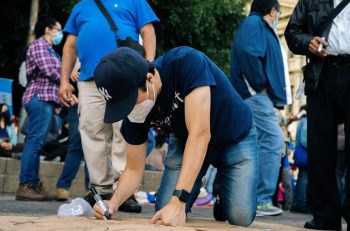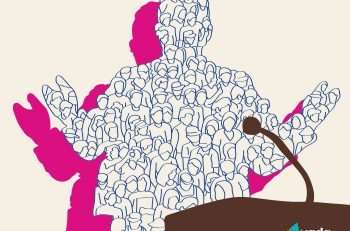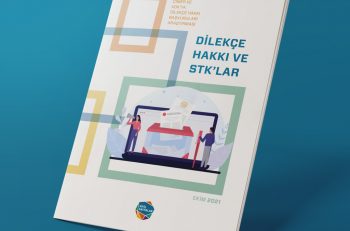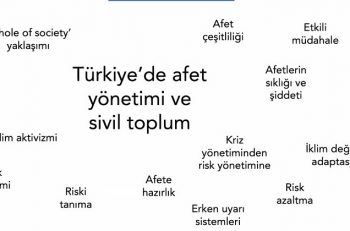Civil Society in National Media: ‘Invisible or Decorative Items’

Civil Society is still a ‘decorative item’ in national media content and coverage, despite a relative increase in its visibility, finds 'Representation of CSOs in National Media: Media Analysis' report of YADA Foundation.
The study of the report aimed at determining the visibility of Turkey’s civil society organizations (CSOs) in the national media, what the overall panorama of CSO-related news stories is, which types of events and news stories are more visible, which CSOs receive more national media coverage in terms of field of activity and civil topography classification, as well as which tones are associated to the content by CSOs and the society.
National Media Coverage of CSOs
In this study conducted between 1 July 2019 and 1 July 2020, national media content on CSOs was gathered through searches. The keywords used were “association,” “foundation,” and “cooperative.” Of the resulting 42,597 news stories, 2358 were deemed to be irrelevant; the remaining 40,239 stories were considered as news stories related to CSOs and formed the basis of the study. Out of these 40,239 news stories, 2274 were chosen via simple random selection to form a sample, and then coded and categorized according to 46 variables.
This yielded preliminary findings concerning the national media coverage of CSOs. Furthermore, 14 in-depth interviews were conducted with experts from CSOs (5), media professionals (4), the private sector (2) and academia (3) so as to understand the reasons underlying the invisibility of CSOs in the media.
CSOs as “Invisible” Actors in the Media
Highlights from the ‘Representation of CSOs in National Media’ study are as follows:
“New” was the keyword most frequently used in news stories concerning CSOs in the national media, between 2019 and 2020. This word, used in phrases such as “new normal”, “new Turkey”, “new system” and “new virus”, stood out in the media coverage of CSOs, in the context of both the economic crisis and the transition to the new government system.
Between 2019 and 2020, CSOs were underrepresented in national media, and there was a 9% drop over the previous study conducted between 2018-2019. According to the recent study, the pandemic and economic issues dominated news on CSOs in the period 2019-2020, while topics such as human rights lagged behind. Although CSOs’ activities during the pandemic could allow for a larger media coverage, there was a remarkable drop in news stories on CSOs.
In the 12 months between 2019-2020, news on CSOs constituted 8,2% of all news stories; while there was a daily average of 110 news stories and a monthly average of 3357 stories featuring the words “foundation”, “association” or “cooperative”.
In the majority of the national media news stories constituting the 8,2%, CSOs were treated not as independent subjects, but rather like decorative items and secondary actors. In general, the CSOs were only mentioned by name and their activities or declarations were not covered. CSOs were the main subject in only 1 out of every 3 news stories mentioning CSOs.
CSOs were mostly covered in the “news” pages of newspapers. In the national media, CSOs were seen to be much more “invisible” in columns and interviews, where they might in fact express their ideas better. According to the so-called civil topography classification, politically oriented CSOs were mentioned in the largest portion of columns, with 27%.
Due to the pandemic, CSOs such as professional organizations became more visible (46%), while CSOs engaged in advocacy work became less so. News stories tended more to present the opinions of experts, while CSOs engaged in advocacy work for the environment and human rights were covered much less.
A sensational tone, employed across the national media to attract more readers, was also used in news on CSOs in 2019-2020. Most news stories’ content risks creating a negative impression about the specific CSO covered in the story and CSOs in general. This unfavorable tone in the news stories is due to the media’s style of journalism, as well as the forms of advocacy used by CSOs. Most news stories paint a gloomy and pessimistic picture. These news stories with a negative tone directly targeted and criminalized CSOs.
Media outlets with different world views and political positions, published content directly targeting civil society organizations. Attempts at polarization were visible.
Another noteworthy finding concerning national media coverage of CSOs was the increased use of data. Showing an increase over the previous two years (2017-2018), data usage supported the news stories casting a negative image of CSOs. Especially in 2020, large amounts of data was utilized in stories on the pandemic and economic issues.
In news stories on CSOs, there was a distance between civil society and public authorities, as was the case in the previous two years. Public authorities’ opinions were rarely cited in such news content. Only 13% of news stories on CSOs presented the opinions of public authorities. CSOs falling into the category of ‘fellow countrymen’ associations reached the highest percentage here, with 28%. Most of these news stories were about public authorities’ visits to such associations, and related declarations.
On the other hand, there were few appeals made to the public at large in CSO-related news articles. There were appeals to public authorities in only 4% of these news stories, although there was a considerable increase in certain categories. Human rights CSOs made the largest number of appeals to to public institutions, with 29%.
Overall, however, there were few calls made to the public, with the percentage remaining as low as 3%. CSOs most frequently made calls to consumers in these news stories. Despite the pandemic, the CSOs did not issue many appeals to the society via the media.
Another major finding of the study was that rarely more than one CSO was mentioned in a news story. In only 7% of CSO-related news stories, more than one CSO was named; as such, only a single CSO was covered in 93% of these news stories. Within that 7%, the focus was on not the contradictions but parallels between different CSOs.
You can access the full report in English from here.
The Invisibility of CSOs
The major qualitative findings of the study are as follows:
- The experts interviewed generally consider that CSOs’ visibility in the media is crucial, since it helps CSOs achieve their goals.
- They also tend to believe that CSOs do not get enough media coverage and are not visible enough.
- These experts think that CSOs in Turkey do not attach much importance to interactions with the society at large, do not create specialized functions to this end, and do not allocate resources to such efforts.
In the study, the following emerge as the main problems preventing CSOs from getting better media coverage:
- To be covered at length by the media, a topic must be urgent, large-scale, immediate, and often negative.
- Most news about CSOs do not meet these criteria; and to get more media coverage, CSOs need to come up with attention-grabbing content.
- CSOs also ought to use the language of the media to get coverage.
Another issue highlighted by the experts is the media’s problematic positioning of CSOs. Accordingly, the national media positions CSOs in 5 basic ways in its news stories:
1- CSOs as ‘extras’: CSOs are positioned as decorative items or ‘extras’, in an overall effort to legitimize a certain idea or approach.
2- 2- CSOs as powerless actors: In a condescending manner, the media presents CSOs and their beneficiaries as powerless actors.
3- 3- CSOs as criminal elements: CSOs are often criminalized or associated with certain crimes by the media.
4- 4- CSOs as members of the opposite team: Using an antagonistic language, pro-government media outlets portray “independent” CSOs in a negative light, as members of the opposite camp.
5- 5- CSOs as reactive actors: The media generally covers CSOs only in the context of specific problems, asking for their reaction in moments of crisis.












Bizi Takip Edin